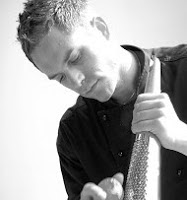Sicilian was leading figure in verismo movement
 |
| Luigi Capuana combined his writing with working as a theatre critic |
Verismo - meaning ‘realism’ - sought to portray society and humanity in the manner of a photograph, objectively representing life as it really was, stripped of romanticism. It tended to focus on the lower levels of society, using explicit descriptive detail and realistic dialogue.
Capuana, who was influenced by the French writers Honoré de Balzac and Emile Zola, and his fellow Sicilian Giovanni Verga were two of the earliest advocates of the movement, which was at its peak in the final quarter of the 19th century.
It declined in popularity in the early 20th century but its principles were revived in the neorealism movement that dominated Italian cinema in the immediate years after World War II and is often cited as a golden age in the Italian film industry.
Capuana, whose best-known works were his novels Giacinta (1879), a psychological study of a wronged woman and Il marchese di Roccaverdina (1901), a study of guilt, was born into a wealthy family in Mineo.
He was given every opportunity to take advantage of the best education available, although to a large extent he was self-taught. He dropped out of the prestigious Royal College of Bronte on the grounds of ill health and left the Faculty of Law in Catania to take part in the revolt in Sicily inspired by Garibaldi and the Risorgimento movement, becoming secretary of the Secret Committee of Insurrection in Mineo.
 |
| Capuana's friend, Giuseppe Verga, was also prominent in the movement |
There he struck up friendships with the most famous writers of the time, including Aleardo Aleardi and Gino Capponi and found regular work as a theatre critic on the newspaper La Nazione.
In 1868 he returned to Sicily, intending only to stay for a brief period, although in the event the death of his father and a change in his own economic circumstances meant he remained in Mineo for the next seven years, working as a schools inspector and later served on the town council, where he was eventually elected mayor.
In 1875 Capuana resumed his literary adventure, moving first to Rome and then, on the advice of his friend, Giuseppe Verga, to Milan, where in 1979 he published Giacinta, regarded by some as the manifesto of the verismo movement. His experience writing for La Nazione helped open doors at the Milan newspaper, Corriere della Sera, where he again worked as a theatre and literary critic.
From Milan he moved back to Rome, where he was editor of the literary review Fanfulla della Domenica and published several volumes of fairy tales, short stories as well as a number of novels, including Il marchese di Roccaverdina.
Rome’s literary scene enabled him to meet and form friendships with Gabriele D’Annunzio and Luigi Pirandello among others, while his own success earned him a good living. His novel Giacinta was adapted as a five-act comedy, which was performed at the Teatro Sannazaro in Naples.
In 1902, Capuana returned to Sicily, continuing to write while lecturing in lexicography and stylistics at the University of Catania. He died in Catania in 1915 at the age of 76.
 |
| Capuana's house in Mineo now contains a museum |
Mineo is a town of medieval origins, characterised by a network of narrow streets clinging to a hillside in western Catania, about 64km (40 miles) southwest of Catania, 56km (35 miles) north of Ragusa and 22km (14 miles) east of Caltagirone. With a population of approximately 5,500, it has a number of churches and other buildings of historical and artistic value, including the churches of Santa Maria Maggiore and Sant’Agrippina. The Palazzo Capuana, where Luigi Capuana was born, now houses a museum commemorating his life, while his resting place at the cemetery of Mineo is marked by a funeral monument by the sculptor Michele La Spina.
Travel tip:
The port city of Catania sits in the shadow of
Sicily's active volcano, Mount Etna
The city of Catania, which is located on the east coast of Sicily facing the Ionian Sea, is one of the 10 biggest cities in Italy, with a population including the environs of 1.12 million. A little like Naples, which is in the shadow of Vesuvius, it lives with the constant threat of a natural catastrophe, having been virtually destroyed by earthquakes twice, in 1169 and 1693, and regularly witnesses volcanic eruptions from nearby Mount Etna. As such it has always been a city for living life to the full. In the Renaissance, it was one of Italy's most important cultural, artistic and political centres and enjoys a rich cultural legacy today, with numerous museums and churches, theatres and parks and many restaurants.
Also on this day:
1606: The painter Caravaggio flees Rome after allegedly murdering Ranuccio Tomassoni
1692: The birth of composer Gemiano Giacomelli
1999: Da Vinci’s Last Supper goes back on display in Milan after 20 years of restoration
(Picture credit: Catania photo by Herbert Aust via Pixabay)






















